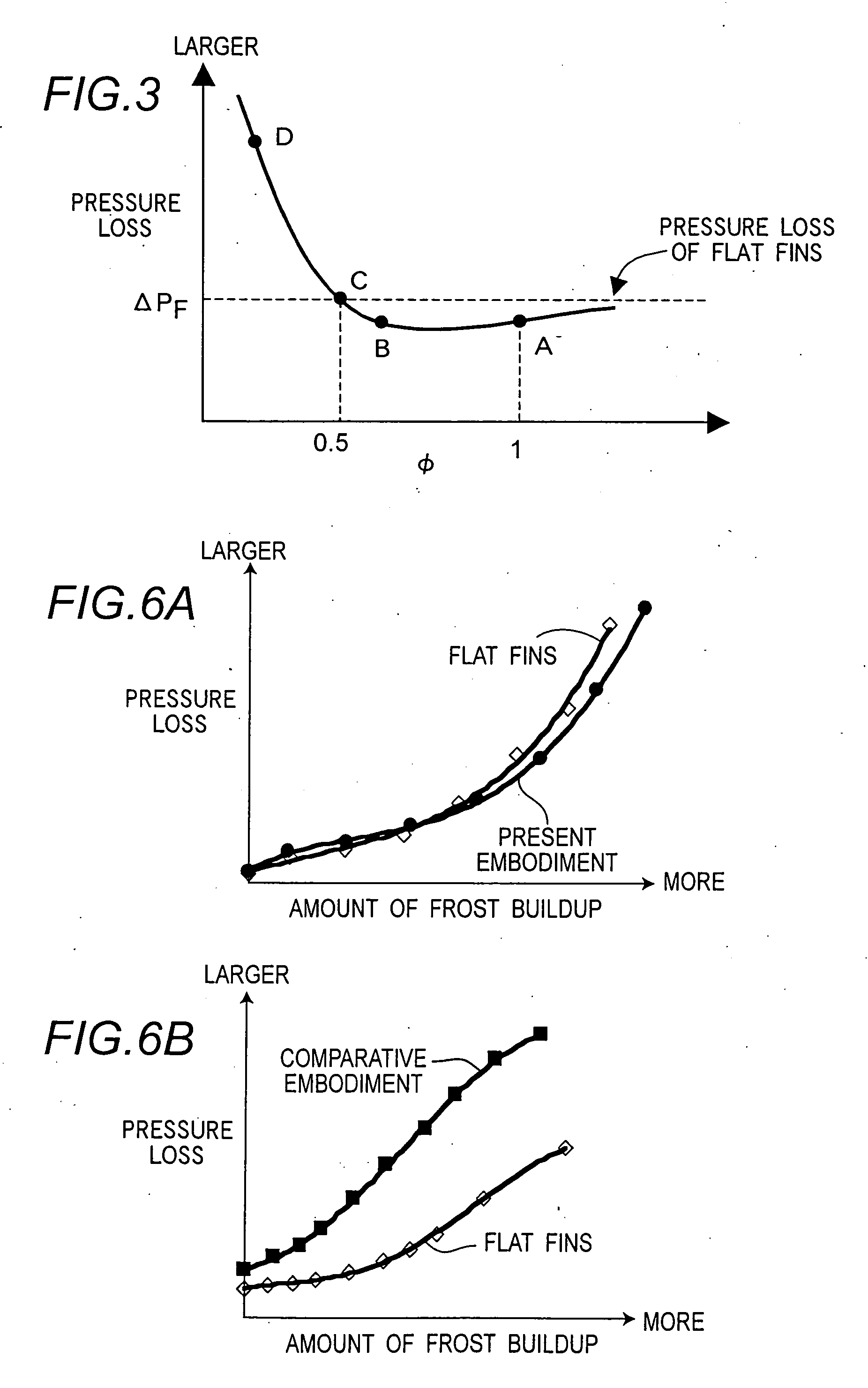Heat exchanger of plate fin and tube type
- Summary
- Abstract
- Description
- Claims
- Application Information
AI Technical Summary
Benefits of technology
Problems solved by technology
Method used
Image
Examples
first embodiment
[0036] As shown in FIGS. 1A and 1B, a heat exchanger according to a first embodiment of the present invention comprises a plurality of fins 1 (FIG. 1A shows only one of the fins) stacked while leaving a given space therebetween, and a plurality of heat exchanger tubes 2 penetrating the fins 1 in the stacking direction. Each of the fins 1 is formed with plural pairs of cut-raised portions 3 (or plurality of cut-raised portion pairs 3) each associated with the corresponding one of the heat exchanger tube 2. The heat exchanger is designed to perform a heat exchange between a first working fluid (e.g. heat transfer medium for air-conditioners) (not shown) allowed to flow inside the heat exchanger tubes, and a second working fluid 4 (e.g. air) allowed to flow outside the heat exchanger tubes, through the fin 1 and the heat exchanger tubes 2.
[0037] In the heat exchanger illustrated in FIGS. 1A and 1B, the plurality of heat exchanger tubes 2 are aligned in a given alignment pitch in one d...
second embodiment
[0064] With reference to FIG. 9, a second embodiment of the present invention will be described. A heat exchanger according to the second embodiment has a lot of common structures as those of the heat exchanger according to the first embodiment illustrated in FIGS. 1A to 7. For avoiding duplicate descriptions, the following description will be made by primarily focusing on different points from the first embodiment. In FIG. 9, a common element or component to that of the heat exchanger illustrated in FIG. 1A is defined by the same reference numeral.
[0065] As shown in FIG. 9, fundamentally as with the first embodiment, the heat exchanger according to the second embodiment comprises a plurality of fins 1, a plurality of heat exchanger tubes 2, a plurality of cut-raised portions 3, and a plurality of cut-raising inhibition zones 5 (FIG. 9 shows only one of the cut-raising inhibition zones 5). The heat exchanger also be designed to perform a heat exchange between a first working fluid ...
third embodiment
[0070] With reference to FIG. 10, a third embodiment of the present invention will be described. A heat exchanger according to the third embodiment has a lot of common structures as those of the heat exchanger according to the first embodiment illustrated in FIGS. 1A to 7. For avoiding duplicate descriptions, the following description will be made by primarily focusing on different points from the first embodiment. In FIG. 10, a common element or component to that of the heat exchanger illustrated in FIG. 1A is defined by the same reference numeral.
[0071] As shown in FIG. 10, fundamentally as with the first embodiment, the heat exchanger according to the third embodiment comprises a plurality of fins 1, a plurality of heat exchanger tubes 2, a plurality of cut-raised portions 3, and a plurality of cut-raising inhibition zones 5 (FIG. 10 shows only one of the cut-raising inhibition zones 5). The heat exchanger also be designed to perform a heat exchange between a first working fluid...
PUM
 Login to View More
Login to View More Abstract
Description
Claims
Application Information
 Login to View More
Login to View More - R&D
- Intellectual Property
- Life Sciences
- Materials
- Tech Scout
- Unparalleled Data Quality
- Higher Quality Content
- 60% Fewer Hallucinations
Browse by: Latest US Patents, China's latest patents, Technical Efficacy Thesaurus, Application Domain, Technology Topic, Popular Technical Reports.
© 2025 PatSnap. All rights reserved.Legal|Privacy policy|Modern Slavery Act Transparency Statement|Sitemap|About US| Contact US: help@patsnap.com



